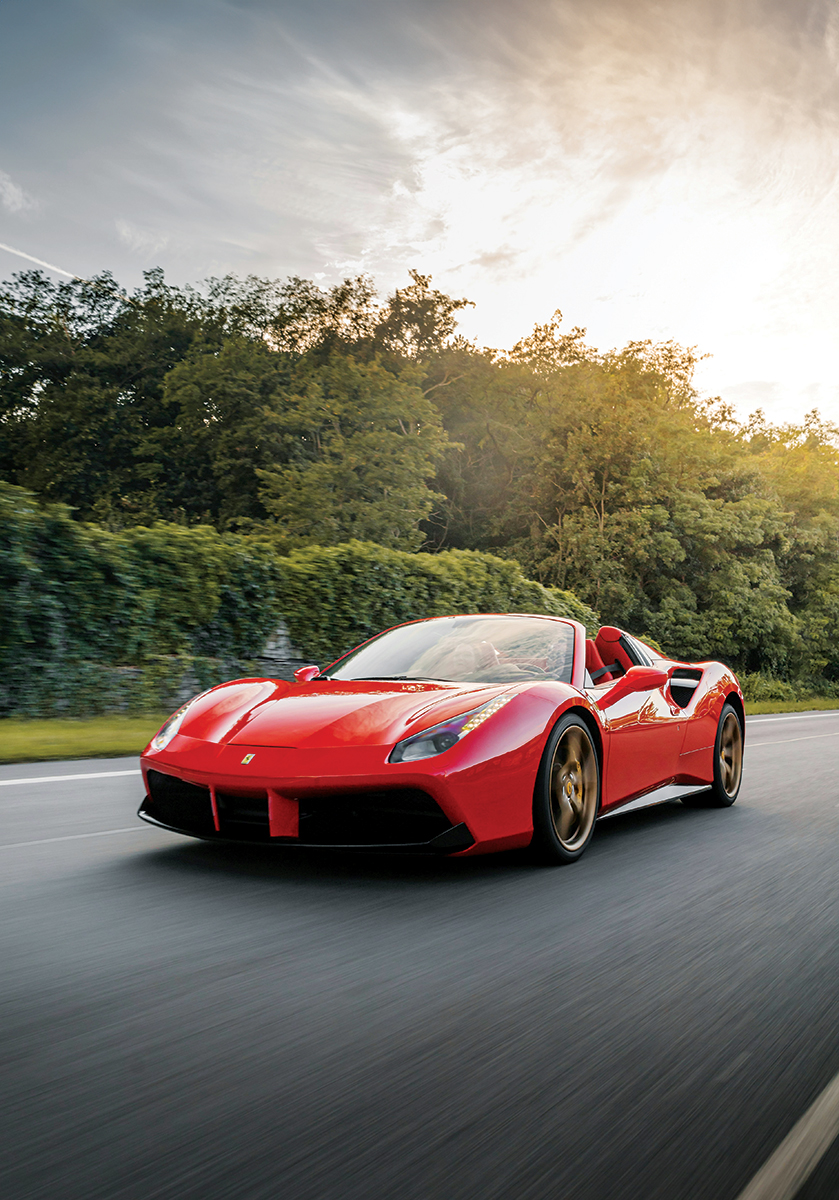Car Seat Brands: A Comprehensive Guide to Protecting Your Precious Cargo
Car Seat Brands: A Comprehensive Guide to Protecting Your Precious Cargo cars.truckstrend.com
Bringing a new life into the world is an experience filled with joy, anticipation, and an overwhelming sense of responsibility. Among the myriad preparations, ensuring your child’s safety during travel stands paramount. This is where car seats come in – not just as a legal requirement, but as the first line of defense in protecting your most precious cargo. However, the world of car seats can be daunting, with countless brands vying for your attention, each promising superior safety, comfort, and convenience. Understanding the landscape of car seat brands, their philosophies, and their offerings is crucial for making an informed decision that could one day save a life. This guide aims to demystify the choices, helping you navigate the market with confidence.
The Undeniable Importance of Choosing the Right Car Seat Brand
Car Seat Brands: A Comprehensive Guide to Protecting Your Precious Cargo
Choosing a car seat isn’t just about picking a color or a price point; it’s about investing in a safety device engineered to protect your child in the event of a collision. Every car seat sold in the United States must meet rigorous federal safety standards set by the National Highway Traffic Safety Administration (NHTSA). However, within these standards, brands differentiate themselves through innovation, quality of materials, ease of use, and additional safety features.
A reputable car seat brand often signifies:
- Advanced Safety Technology: Beyond basic compliance, leading brands invest in research and development to incorporate features like advanced side-impact protection, anti-rebound bars, load legs, and energy-absorbing foam, significantly enhancing protection.
- Superior Material Quality: High-quality fabrics, durable plastics, and robust steel frames contribute to the seat’s longevity, comfort, and ability to withstand impact.
- Rigorous Testing: Many brands conduct additional testing beyond federal requirements, including crash tests at various speeds and angles, to ensure their products perform optimally in real-world scenarios.
- Ease of Use and Installation: A car seat is only safe if installed correctly. Brands that prioritize intuitive installation features (like clear leveling indicators, simple LATCH connectors, or tensioning systems) greatly reduce the risk of misuse.
- Customer Support and Warranty: Established brands typically offer excellent customer service, product registration for recall notifications, and comprehensive warranties, providing peace of mind.

Understanding Car Seat Types and Their Leading Brands
Car seats are designed to accommodate children at different stages of their growth, evolving from infancy through booster seat age. Each type caters to specific needs and weight/height limits.
1. Infant Car Seats (Rear-Facing Only)
These seats are designed exclusively for newborns and infants, typically from 4 to 35 pounds. They are characterized by a convenient stay-in-car base, allowing you to easily click the carrier in and out without re-installing the base every time. Many are also compatible with strollers to form a "travel system."

- Leading Brands:
- Chicco: Renowned for their "KeyFit" line, praised for incredibly easy and secure installation, often scoring top marks for ease of use.
- Graco: Offers a wide range of popular infant seats like the "SnugRide" series, known for affordability and compatibility with many strollers.
- Maxi-Cosi: European design, often stylish, and known for being lightweight and compatible with premium strollers.
- Britax: Features advanced safety technologies like SafeCell Impact Protection and anti-rebound bars in models like the "B-Safe" series.

2. Convertible Car Seats
Designed to transition from rear-facing to forward-facing, convertible seats offer extended use and are a popular choice for parents looking for longevity. They can typically be used from birth (or around 5 lbs) up to 40-65 lbs in rear-facing mode, and then up to 65 lbs or more in forward-facing mode.
- Leading Brands:
- Britax: Models like the "Boulevard" and "Marathon" are highly regarded for their robust build, advanced safety features, and ease of installation.
- Graco: The "Contender," "Extend2Fit," and "4Ever" lines offer various features and price points, with "Extend2Fit" being popular for extended rear-facing capabilities.
- Clek: High-end brand known for its steel frame construction, extended rear-facing limits, and sleek, narrow designs (e.g., "Foonf," "Fllo").
- Diono: Famous for their slim, steel-reinforced "Radian" series, allowing three-across seating in many vehicles and high rear-facing weight limits.
3. All-in-One Car Seats
These versatile seats are designed to be the only car seat you’ll ever need, converting from rear-facing to forward-facing, and then to a high-back booster, and sometimes even a backless booster. They typically accommodate children from 4 lbs up to 100-120 lbs.
- Leading Brands:
- Graco: The "4Ever" and "Extend2Fit 3-in-1/4-in-1" are market leaders, offering excellent value and long-term use.
- Evenflo: The "EveryStage" and "Symphony" series provide similar multi-stage functionality at competitive price points.
- Safety 1st: Offers various multi-stage seats, focusing on affordability and essential safety features.
4. Booster Seats
Once a child outgrows their forward-facing car seat (typically around 40 lbs and having met height requirements), they transition to a booster seat, which helps position the vehicle’s seat belt correctly over their body. Boosters are used until the child is tall enough to fit the vehicle’s seat belt without a booster (usually 4’9" or 57 inches tall, typically between ages 8-12).
- Leading Brands:
- Chicco: The "KidFit" line is popular for its comfortable padding, LATCH connectors for secure installation, and ease of use.
- Graco: Offers a wide array of booster seats, including the "Affix" (high-back LATCH) and various backless options, known for value.
- Britax: The "Frontier" and "Pinnacle" are combination harness-to-booster seats, offering robust protection and higher weight limits.
- Evenflo: Provides budget-friendly booster options with good safety features.
Key Factors to Consider When Evaluating Car Seat Brands
Beyond just the type of seat, there are several critical factors to weigh when comparing brands:
- Safety Features: Look for side-impact protection, anti-rebound bars (for rear-facing), load legs, energy-absorbing foam, and steel frames.
- Ease of Installation: Check for clear instructions, accessible LATCH connectors, built-in lock-offs for seatbelt installation, and recline indicators. A seat is only safe if installed correctly, so ease is paramount.
- Comfort and Fit: Padded inserts for infants, adjustable headrests and harnesses, breathable fabrics, and ample legroom contribute to your child’s comfort, especially on long journeys.
- Ease of Cleaning: Removable, machine-washable covers are a lifesaver for inevitable spills and messes.
- Longevity and Expiration: Car seats have expiration dates (typically 6-10 years from manufacture). Consider the seat’s lifespan relative to your child’s growth.
- Budget: Car seat prices range from under $100 to over $500. While a higher price often correlates with more features and premium materials, it doesn’t necessarily mean it’s "safer" than a correctly installed, compliant budget option.
- Vehicle Compatibility: Always check the car seat’s dimensions and installation requirements against your specific vehicle model to ensure a proper and safe fit.
- Stroller Compatibility: If you plan on a travel system, verify that the infant car seat brand is compatible with your preferred stroller brand, or consider purchasing a complete travel system package.
Practical Advice for Choosing and Using Your Car Seat
- Research Thoroughly: Read reviews, watch installation videos, and consult safety ratings from reputable sources like NHTSA.
- Try Before You Buy (If Possible): If buying in-store, try placing the car seat in your vehicle to check for fit and ease of installation. If your child is with you, have them sit in it to gauge comfort.
- Read the Manual (Cover to Cover): This is non-negotiable. The manual contains crucial information on installation, weight/height limits, cleaning, and safety warnings specific to your seat.
- Get It Professionally Checked: Many fire departments, police stations, and certified child passenger safety technicians offer free car seat checks to ensure proper installation.
- Don’t Buy Used Unless You Know Its History: Used car seats can be compromised by invisible damage from a crash, have missing parts, or be expired. If you must use a used seat, ensure you know its full crash history, it’s not expired, and all parts are present.
- Register Your Car Seat: This ensures you receive important safety updates and recall notifications directly from the manufacturer.
Estimated Price Range Table for Popular Car Seat Brands
Please note: Prices are estimates and can vary significantly based on specific models, retailers, sales, and features. This table is for general guidance.
| Brand Name | Typical Product Line Examples | Key Features (General) | Estimated Price Range (USD) |
|---|---|---|---|
| Graco | SnugRide (Infant), Extend2Fit (Convertible), 4Ever (All-in-One), Affix (Booster) | Wide range, affordable, user-friendly, popular | $100 – $350 |
| Chicco | KeyFit (Infant), NextFit (Convertible), KidFit (Booster) | Easy installation, quality fabrics, high ease-of-use ratings | $180 – $380 |
| Britax | B-Safe (Infant), Boulevard/Marathon (Convertible), Frontier (Harness-to-Booster) | Premium safety, robust build, SafeCell Impact Protection, anti-rebound bars | $200 – $450 |
| Maxi-Cosi | Mico (Infant), Pria (Convertible) | Stylish European design, lightweight, often stroller-compatible | $220 – $400 |
| Clek | Foonf/Fllo (Convertible), Liing (Infant) | Steel frame, extended rear-facing, narrow design, high-end materials | $400 – $700+ |
| Diono | Radian (Convertible/All-in-One) | Slim design (3-across capable), steel frame, high weight limits, foldable | $250 – $450 |
| Evenflo | LiteMax (Infant), EveryStage (All-in-One), SureRide (Convertible) | Budget-friendly, good value, essential safety features | $80 – $280 |
| Safety 1st | Grow and Go (All-in-One), Guide 65 (Convertible) | Affordable, basic to mid-range features, wide availability | $80 – $250 |
Frequently Asked Questions (FAQ) about Car Seat Brands
Q1: How do I know if a car seat brand is safe?
A1: All car seats sold in the US must meet Federal Motor Vehicle Safety Standard 213 (FMVSS 213) and bear a label stating so. Look for NHTSA’s car seat ratings (5-star ease of use ratings are available), and research independent reviews and brand reputations for advanced safety features and customer support.
Q2: Does a more expensive car seat brand mean it’s safer?
A2: Not necessarily. All car seats on the market meet the same federal safety standards. More expensive seats often offer enhanced convenience features (e.g., easier installation, premium fabrics, extra padding), advanced safety technologies beyond the minimum (e.g., load legs, anti-rebound bars, specialized side-impact protection), or extended longevity, but a properly installed budget-friendly seat is still very safe.
Q3: When should I switch from one car seat type to another?
A3: Always follow the specific weight, height, and age limits outlined in your car seat’s manual. Generally, children stay rear-facing as long as possible (at least until age 2, ideally longer), then move to forward-facing with a harness, and finally to a booster seat when they outgrow the harnessed seat. They’re ready for a vehicle seat belt when they pass the 5-step test (usually around 4’9" tall).
Q4: Can I use a car seat from a different brand with my stroller to create a travel system?
A4: Sometimes. Many infant car seat brands are compatible with certain stroller brands using adapters. Check the compatibility lists provided by both the car seat and stroller manufacturers before purchasing. Universal adapters also exist but may not offer the most secure fit.
Q5: How long do car seats last, and why do they expire?
A5: Most car seats have an expiration date, typically 6-10 years from the date of manufacture. They expire because materials can degrade over time due to temperature fluctuations, sun exposure, and normal wear and tear. Also, safety standards and technology constantly evolve, making older seats less effective compared to newer designs. Always check the expiration date, usually stamped on the seat’s plastic or on a label.
Conclusion
Navigating the world of car seat brands can feel overwhelming, but armed with the right information, you can make a confident choice that prioritizes your child’s safety. Remember that the "best" car seat isn’t necessarily the most expensive, but the one that fits your child, fits your vehicle, and is installed correctly every time. By understanding the different types of seats, the key features to look for, and the reputations of leading brands, you’re not just buying a product; you’re investing in peace of mind and, most importantly, in your child’s well-being. Drive safely, and know that you’ve made an informed decision to protect your most precious cargo.





